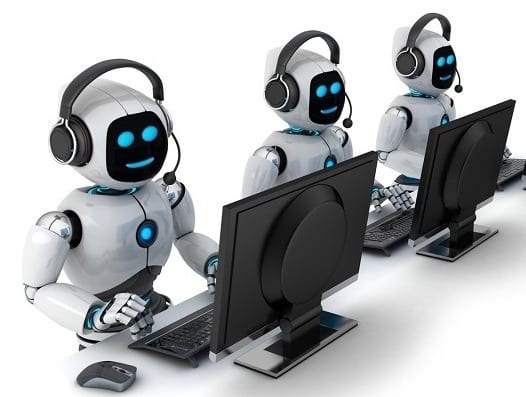
Editor: Johnathan Meyers | Tactical Investor
AI Job Destruction: The Inevitable Storm
Oct 23, 2023
The transformation of work through technologies like AI, robotics and automation raises essential questions about how jobs may change. While some headlines warn of widespread displacement, the reality is far more nuanced as threats and opportunities emerge.
Early studies estimated substantial fractions of jobs at high risk of automation. However, these looked primarily at technical potential and failed to account for historical economic and organisational adaptations. Subsequent analyses incorporating these dynamics found automation had replaced fewer tasks than initially projected.
Predicting the Impact of Emerging Technologies on Jobs
Real-world evidence also diverges from some early warnings. According to recent US surveys, fewer workers report performing routine tasks vulnerable to automation compared to earlier projections. CEOs also expect a more gradual change than some consultancies predicted.
However, specific roles remain vulnerable, like data entry clerks. At the same time, demand has grown for skills leveraging human creativity, social-emotional intelligence and complex problem-solving abilities that technologies currently struggle to replace.
Overall, precisely predicting location-specific impacts over different timescales has challenged experts. However, a balanced perspective recognizes threats and opportunities will emerge through technology’s use across sectors. Continued evaluation of evidence can help identify policy tools maximizing benefits through retraining, social support, new job creation, and inevitable changes. With proactive management, emerging innovations need not diminish work but may expand its nature and extent.
The Numbers Game: Predictions and Reality
Early predictions of widespread job losses due to automation have evolved as real-world adoption of technologies like artificial intelligence, robotics, and machine learning accelerates. While some occupations face disruption, impacts appear more nuanced than initial forecasts suggested.
Several studies have estimated the susceptibility of jobs to automation, with varying conclusions. In 2013, a paper estimated that 47% of U.S. jobs were at risk of automation. However, subsequent studies have suggested lower figures, such as 9% or 14%, with an additional 32% having a risk of significant change due to automation.
Despite these differences, these studies share the idea that the future of work can be predicted by observing what tasks computers can perform. This concept is rooted in historical observations, as jobs intensive in routine tasks have declined since 1980, a trend predicted by Herbert Simon in 1960. The U.S. Bureau of Labor Statistics also arrived at similar conclusions in the 1960s.
It’s important to note that the original 2013 study didn’t predict an employment apocalypse but estimated the potential scope of automation. This perspective, when viewed in the context of historical job transformations, appears less alarming. It’s essential to understand that these estimates offer insights into the possibilities of automation rather than firm predictions of the pace at which jobs will be automated.
Seeking more evident consensus, in 2021, the OECD reviewed 18 member nations and found that 14% of jobs could be partially automated using current technologies. A further 32% faced significant change as tasks within roles shifted, but complete replacement remained unlikely.
Perhaps the most well-known prediction came from a 2020 McKinsey Global Institute report projecting automation could displace 800 million roles worldwide by 2030. However, the consultancy has since acknowledged this oversimplified dynamics, finding countries have generally automated fewer tasks than anticipated over the last two decades.
Recent surveys by Gallup and the World Economic Forum paint a still more moderate picture. Just 12% of US workers reported performing tasks at high risk of automation in 2021, down from the 47% Oxford study projected. And a survey of global CEOs in 2022 found only 25% expect widespread automation in 5-10 years.
While specific jobs like data entry clerks face challenges, economists note disruption also breeds opportunity. As artificial agents take over routine physical and cognitive work, roles emphasizing uniquely human skills like complex problem-solving, management and caring for others are growing significantly, according to Bureau of Labor Statistics projections. Meanwhile, according to some estimates, accelerating technologies like electric vehicles create over a million new jobs.
Overall, automation is undoubtedly transforming how we work in complex ways. But precisely predicting its pace and localized impacts remains difficult. A balanced perspective recognizes both opportunities and disruptions, with adaptations at individual, community and policy levels key to an inclusive future of work. Continued evidence-based discussion can help shape responses, maximizing benefits for all.
The Impact of New Automation Technologies on Job Dynamics
The impact of new automation technologies on job dynamics is a complex and evolving topic. While automation can potentially replace specific tasks and occupations, its overall effect on employment is not entirely negative. Here are some key points to consider:
1. Empirical Studies on Automation: Numerous studies have examined the effects of automation on jobs. The findings vary, but many suggest that automation leads to job displacement in certain sectors and occupations. However, these studies also highlight the potential for job creation in new industries and the transformation of existing roles. The net impact on employment depends on factors such as the pace of technological advancement, the ability of workers to adapt and acquire new skills, and the broader economic context.
2. Job Creation and Destruction Dynamics: Job creation and destruction are ongoing economic processes. Technology-driven automation can eliminate specific jobs, but it can also create new opportunities. Technological advancements have created new industries and occupations, even as some jobs have become obsolete. The nature of work may change with a shift towards tasks that require uniquely human skills, such as complex problem-solving, creativity, and interpersonal interaction.
3. Reshoring and Automation: Automation technologies have the potential to impact global supply chains and the location of production. Reshoring, the process of bringing back manufacturing or service activities to the home country, may be facilitated by automation. While reshoring can lead to job creation in certain sectors, it is important to consider the potential effects on global trade, international labor dynamics, and the overall distribution of employment opportunities.
4. Perception Bias and Inequality: The anthropomorphic characteristics of some automation technologies, such as robots or AI systems, can create a perception bias where individuals may overestimate their labor-replacing potential. This perception bias can contribute to concerns about job displacement and growing inequality. It highlights the importance of implementing progressive policies that address the potential impacts of automation, ensure equitable distribution of benefits, and support workers in transitioning to new jobs through reskilling and upskilling programs.
The impact of new automation technologies on job dynamics is multifaceted. While automation can potentially disrupt specific jobs and industries, it also creates opportunities for job creation and the transformation of work. The net effect on employment depends on various factors, including technological advancement, workers’ ability to adapt, and broader socio-economic conditions. Addressing the challenges and maximizing the benefits of automation requires proactive policies that promote inclusive growth, support workers in transitioning to new jobs, and ensure a fair distribution of opportunities and benefits.
Charting an Inclusive Path Forward
Though predicting the pace and scope of technological disruption to work remains imperfect, one certainty is that constant change defines the modern economy. Rather than fearing uncertainties, a wiser approach embraces dynamism as an opportunity.
All signs point to both challenges and rewards ahead as automation, AI and new tools augment human capabilities in mutually-beneficial ways. Early evidence hints at hybrid human-machine collaborations expanding the breadth and quality of work, from personalized education to customized healthcare.
To navigate this journey, societies must prioritize inclusiveness, maintaining dignity and prosperity for all. Investing in lifelong learning systems ensures workers can continually gain new skills. Robust social safety nets ease transitions between roles. Progressive policies curb growing divides in areas like wage distribution and ownership of advanced capital.
With proactive management, emerging tools can spread benefits far beyond traditional boundaries of geography and profession. Untapped potential remains to harness innovation addressing humanity’s greatest problems through aligned public-private efforts. Coordinating research worldwide may one day help eliminate diseases, hunger and environmental risks challenging global progress.
Though signposts constantly shift, openness to change and determination to strengthen communities through it remain our surest guiding light. By cultivating tomorrow’s innovations with empathy, ethics and care for all people, technology need not diminish work but flourish it in new and rewarding forms. The future truly begins now as we shape it.
The Latest Data: A Snapshot of 2023
As of 2023, the World Economic Forum reports that automation and AI will create 12 million more jobs than they will destroy over the next five years. This is a significant shift from previous predictions, indicating a more optimistic outlook on the impact of technology on employment.
Moreover, a 2023 study by PwC suggests that AI and related technologies such as robotics, drones, and autonomous vehicles could create as many as 21 million jobs in the UK alone by 2037. These jobs would be spread across various sectors, including healthcare, science, education, and cybersecurity.
In the United States, the Bureau of Labor Statistics projects that occupations related to AI, such as software developers and information security analysts, will grow by 31% from 2019 to 2029, much faster than the average for all occupations.
Furthermore, a Gartner report from 2023 reveals an exciting trend: AI is expected to be a net job motivator, creating 2.3 million jobs while only eliminating 1.8 million by 2025. This starkly contrasts the earlier narrative of AI as a significant job destroyer.
These data points paint a picture of a future where automation and AI could be catalysts for job creation and economic growth rather than threats to employment. The key lies in our ability to adapt, learn, and harness the potential of these technologies.
The Reshoring Phenomenon: A New Trend
The trend of reshoring, which involves relocating manufacturing or service activities back to the home country, has gained attention in recent years. Advancements in automation technologies have been one of the factors contributing to this phenomenon. Here are some key points to consider regarding reshoring and its relationship to automation:
1. Automation’s Role in Reshoring: Automation technologies have the potential to impact global supply chains and manufacturing processes. Companies can reduce labour costs, increase productivity, and enhance efficiency by automating specific tasks. This can make domestic production more competitive compared to offshoring to countries with lower labour costs. As a result, some multinational companies have chosen to reshore their operations to their home countries.
2. Factors Driving Reshoring: While automation plays a role, reshoring is influenced by a combination of factors. Rising labour costs in offshore locations, logistical challenges, quality control issues, protectionist trade policies, geopolitical considerations, and the desire for closer proximity to markets and customers contribute to the decision to reshore. Automation technologies can enhance the competitiveness of domestic production, but they are not the sole driver of the reshoring trend.
3. Job Implications: Reshoring has the potential to create jobs in the home country. When companies bring back manufacturing or service activities, they may need to hire workers to operate and maintain the automated systems, manage the production processes, and support the overall operations. While automation can lead to job displacement in certain sectors, the reshoring trend may offset some of the job losses by creating new employment opportunities.
4. Skill Requirements: As reshoring occurs alongside automation, the nature of jobs may change. The demand for certain skills, such as technical expertise in operating and maintaining automation technologies, may increase. Workers may need to acquire new skills through training and upskilling programs to meet the evolving demands of reshored industries. Governments, educational institutions, and businesses play a role in facilitating the transition and ensuring that workers have the necessary skills for the reshored jobs.
It’s important to note that while reshoring can create job opportunities, the overall impact on employment depends on various factors, including the scale and pace of reshoring, the level of automation involved, and the broader economic context. Additionally, reshoring is not a universal trend and may vary across industries and regions.
Addressing Inequality: The Role of Progressive Policies
As automation and AI technologies advance, it becomes increasingly important to implement progressive policies that address the potential challenges and mitigate growing inequality. Here are some key considerations regarding the role of progressive policies in addressing inequality:
1. Skills Development and Training: Progressive policies can focus on promoting skills development and lifelong learning opportunities for workers. By investing in education and training programs, governments can help individuals acquire the skills needed for future jobs. This includes providing support for reskilling and upskilling initiatives, vocational training, and access to affordable or free educational resources.
2. Social Safety Nets: Progressive policies can strengthen social safety nets to ensure a smooth transition for workers affected by automation-related job displacement. This may involve expanding unemployment benefits, providing income support, and offering job placement services. Moreover, policies can emphasize the importance of reemployment assistance and support mechanisms, such as job counselling and job search programs, to help displaced workers find new employment opportunities.
3. Fair Wage and Labor Standards: Progressive policies can advocate for fair wage practices and labour standards to prevent the exacerbation of income inequality. This includes promoting a living wage, ensuring access to healthcare benefits, protecting workers’ rights, and addressing issues related to precarious employment. By establishing and enforcing these standards, policies can help create a more equitable and inclusive labour market.
4. Inclusive Economic Growth: Progressive policies should aim to foster inclusive economic growth by promoting entrepreneurship, supporting small and medium-sized enterprises (SMEs), and reducing barriers to entry for underrepresented groups. By providing access to capital, training, and resources, policies can empower individuals from diverse backgrounds to participate in and benefit from the technological advancements of automation and AI.
5. Collaboration and Stakeholder Engagement: Addressing inequality requires collaboration among various stakeholders, including governments, businesses, labour unions, and civil society organizations. Progressive policies should facilitate dialogue and partnerships that promote shared responsibility and collective action. By engaging all stakeholders, policies can be designed to consider different groups’ diverse needs and perspectives, leading to more effective and inclusive outcomes.
In conclusion, progressive policies play a vital role in addressing the challenges posed by automation and AI technologies and mitigating growing inequality. By focusing on skills development, strengthening social safety nets, promoting fair labour standards, fostering inclusive economic growth, and encouraging collaboration, policies can ensure that the benefits of technological advancements are shared equitably and that workers are supported in navigating the transition to new jobs. Societies can strive for a more inclusive and sustainable future through these proactive policy measures.
Concluding Thoughts on AI Job Destruction
The question of whether the labour-replacing potential of the technological revolution is fundamentally different from the past and whether it inhibits or generates decent work is a topic of ongoing debate and analysis. Here are some key considerations:
1. Technological Advancements: The current wave of automation technologies, including artificial intelligence, robotics, and machine learning, has the potential to automate a wide range of tasks and occupations. These technologies can perform routine, repetitive, and rule-based tasks more efficiently than humans. As a result, some jobs may be displaced or transformed.
2. Job Creation and Destruction Dynamics: Throughout history, technological advancements have led to job destruction in specific sectors and occupations. However, they have also created new industries, disciplines, and opportunities for employment. Job creation and destruction dynamics are complex and can vary across industries, regions, and time periods. While automation can replace certain tasks, it can also generate new jobs requiring unique human skills, such as creativity, problem-solving, and interpersonal interaction.
3. Impact on Decent Work: The impact of automation on decent work is multifaceted. On one hand, automation can lead to job displacement, particularly in routine and low-skilled occupations. This can result in income loss, unemployment, and challenges for workers in transitioning to new jobs. On the other hand, automation has the potential to enhance productivity, improve working conditions, and create new opportunities for meaningful and fulfilling work. The extent to which automation inhibits or generates decent work depends on how societies and policymakers address the challenges and opportunities presented by technological advancements.
4. Policy and Social Responses: Progressive policies and social responses are essential to address the potential adverse effects of automation on decent work. This includes investing in education and lifelong learning to equip workers with the skills needed for the evolving job market. Policies can also support workers transitioning to new jobs through reskilling programs, providing social protection measures, and promoting inclusive economic growth. Additionally, collaborative efforts between governments, businesses, and other stakeholders are essential to ensure that the benefits of automation are shared equitably.
In conclusion, the labour-replacing potential of the technological revolution is a complex and evolving phenomenon. While automation technologies can potentially replace specific tasks and jobs, they also create new employment opportunities. The overall impact of decent work depends on various factors, including policy responses, social initiatives, and the ability of workers to adapt and acquire new skills. By addressing the challenges and maximizing the benefits of automation, it is possible to foster an environment where technology is a generator rather than an inhibitor of decent work.
New Perspectives: Pushing Boundaries of Knowledge

TGB Stock Forecast: Rising or Sinking

Stock Market Crash Date: If Only The Experts Knew When

Reasons Why AI Is Bad: The Dark Truth?

The Inflationary Beast: Understanding What Inflation is and What Causes It

Carnosine Benefits: An Antioxidant for Health, Longevity, and Disease Prevention
Identifying Trends and Buying with Equal Weighted S&P 500 ETF

Psychology of Cursing: Why Do People Curse So Much?

Spy 200-Day Moving Average: Covert Financial Indicator Unveiled

Black Monday Crash of 1987: Turning Crisis into Opportunity

TGB Stock Price: Riding the Copper Wave with Taseko Mines

Why is the US dollar the Strongest US currency: its deadly effects

Explain Why Diversification Is Such an Important Concept When It Comes to Investing for Your Future

Unearthing the Housing Market Collapse: Learning From The Past

Which of the Following Statements Are True About the Velocity of Money? Let’s Find Out

Exposing the Truth Behind the Infamous Label: Millennials Really Are Dumb
Inside the Market Psychology Cycle: Unveiling Trends and Tactics


